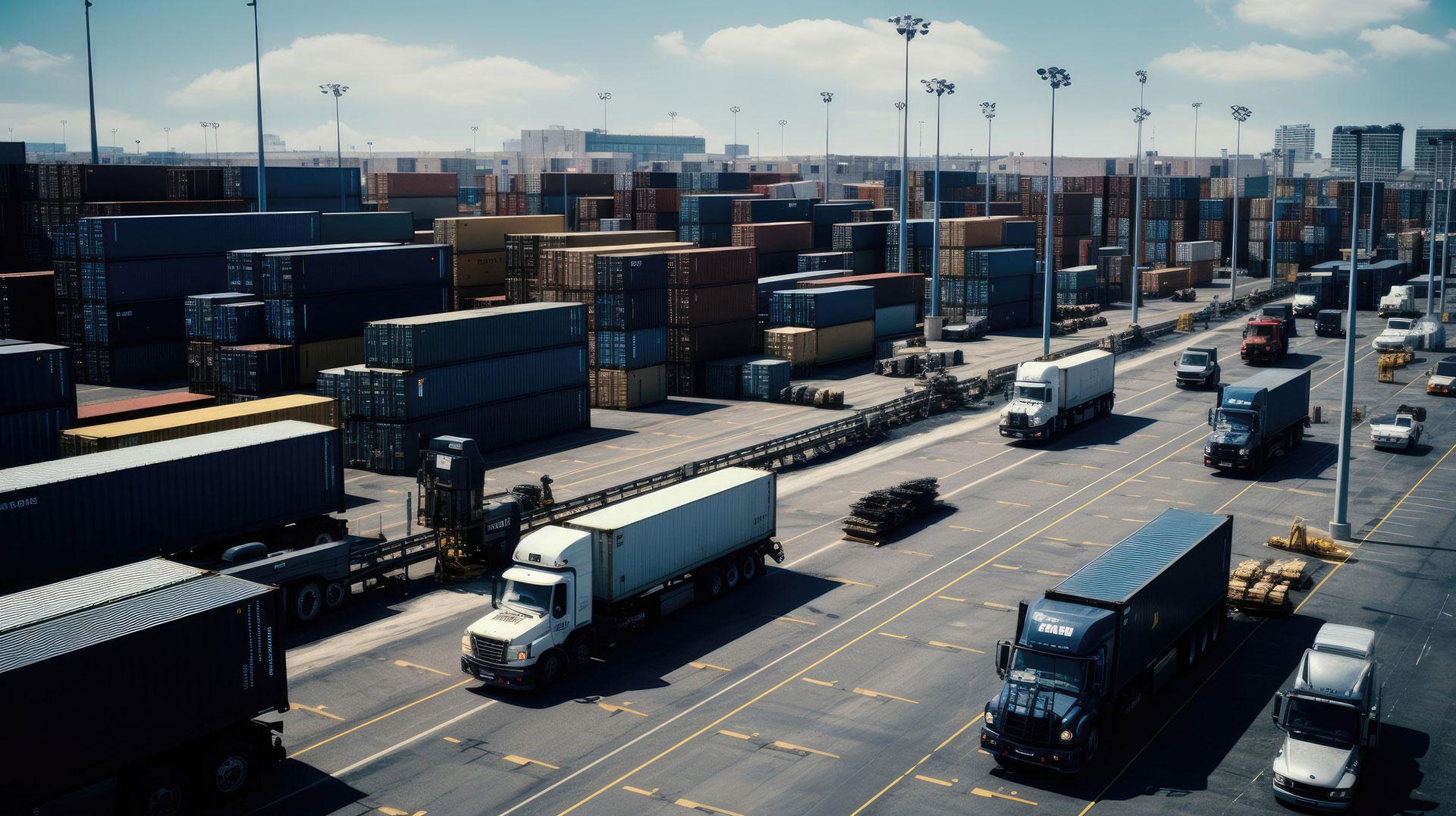Manual vs Automatic Semi Truck Transmissions: Pros & Cons
February 12th, 2025
By Arrow Truck Marketing

Selecting the best transmission for a semi-truck is a big decision that affects many aspects of trucking, including performance, efficiency, and long-term costs. Owner-operators, fleet managers, and prospective buyers must weigh the benefits and drawbacks of manual and automatic transmissions to make an informed choice. While manual gearboxes have been the industry standard for decades, advancements in automatic and automated manual transmissions (AMTs) have narrowed the gap in reliability and efficiency. Understanding the strengths of each transmission type can help you choose the best option for your needs.
Performance and Driving Experience
Manual transmissions offer direct control over shifting, allowing experienced drivers to optimize gear changes based on road conditions and loads. This level of control is beneficial for handling steep grades, navigating inclement weather, and maximizing power in demanding situations. However, manual transmissions require skill and experience, making them less appealing to newer drivers.
Modern automatic transmissions and AMTs have advanced software programmed to adjust shifts for optimal efficiency. These systems remove the need for manual clutch operation, which reduces driver fatigue—especially in urban settings or stop-and-go traffic. Today's automatic transmissions also feature predictive shifting and adaptive learning, which adjust to road conditions and driver habits for smoother operation. Some even integrate telematics and real-time diagnostics, helping fleets remotely monitor transmission health and performance.
But even with all that, automatic transmissions do not offer drivers the same level of control as manual transmissions. If you're concerned, taking a test drive to experience what each can do is a good idea.
Efficiency and Fuel Economy
Fuel efficiency is a key factor in transmission selection, as fuel costs account for a significant portion of operational expenses. Manual transmissions traditionally offer better fuel economy when operated by skilled drivers who can optimize gear shifts. However, human error can lead to inconsistent performance, particularly for less-experienced drivers, which will erode the fuel economy benefits.
Automated transmissions have improved fuel efficiency by optimizing shifts with precise, computer-controlled adjustments. Many modern AMTs feature predictive cruise control and GPS-based shifting logic, which preemptively adjust gears based on terrain and road conditions. While traditional automatics sometimes exhibit slightly higher fuel consumption than manuals, the gap is narrowing.
Maintenance and Reliability
Manual transmissions are generally more straightforward in design and involve less tech, resulting in lower maintenance costs and a longer lifespan. Clutch replacements and gearbox repairs are predictable and often less expensive than servicing an automatic transmission. Manual transmissions can be advantageous in long-term cost planning for fleet managers due to their durability.
Automatic transmissions, on the other hand, have historically been more expensive to repair due to their complexity. High-tech transmission control modules, torque converters, and hydraulic systems require specialized servicing. However, modern AMTs have improved in reliability, and many now outlast traditional automatic transmissions and reduce wear on drivetrain components. When properly maintained, automatic transmissions can offer extended service intervals and minimize downtime and repair costs. In fleet operations, where uptime is everything, the potential reduction in unexpected breakdowns can justify the higher initial investment.

Driver Preferences and Workforce Considerations
The trucking industry faces a driver shortage, and transmission choice can impact recruitment and retention. Manual transmissions demand a high level of driving skill, which is a barrier for new drivers. Many younger drivers prefer automatic transmissions, as they simplify operation and reduce fatigue, particularly on long hauls. Finding experienced drivers who can skillfully handle a manual transmission is a challenge.
For fleet managers, transitioning to automatic or AMT-equipped trucks can broaden their hiring pool by making trucks more accessible to a broader range of drivers. Owner-operators, however, may still prefer manual transmissions if they value control and are comfortable with the learning curve. Some experienced drivers argue that manuals connect them to the truck, allowing them to anticipate performance nuances that automatics handle through software.
Best Applications for Each Transmission Type
All that aside, are there any other reasons to choose one over the other?
Long-Haul Trucking
For extended highway routes, automated manual transmissions excel due to their ability to optimize fuel economy over long distances. Many long-haul carriers have transitioned to AMTs to enhance efficiency, improve driver comfort, and extend vehicle lifespan. Manual transmissions can still be beneficial in regions with varied terrain, where precise control over shifting is an advantage.
Local and Regional Delivery
City and regional routes involve frequent stopping and starting, which makes automatic transmissions a preferred choice. Reducing clutch usage lowers driver fatigue and enhances efficiency in urban environments. Manual transmissions, while still common in older regional fleets, may increase maintenance costs due to clutch wear from frequent gear changes.
Heavy Hauling and Rugged Terrain
Manual transmissions remain dominant in applications requiring maximum control, such as heavy-haul trucking and off-road conditions. The ability to fine-tune shifts and hold gears longer gives manual transmissions an edge in extreme conditions. While AMTs have improved in handling heavier loads, experienced drivers often favor the reliability and direct control of manual transmissions in these scenarios.
Resale Value and Market Trends
Transmission choice greatly influences resale value as market trends are shifting toward automatics and AMTs. Buyers shopping for used trucks increasingly prefer automatics due to their ease of use, potentially making them a stronger investment for resale. However, manual transmissions still have a loyal following, particularly among experienced operators who prioritize control and lower maintenance costs. However, as more fleets transition to automatic models, resale demand for manual trucks may decrease.
And let's not forget about electric and hybrid trucks. Electric trucks eliminate traditional transmissions altogether, and hybrid models incorporate advanced automated transmissions that offer fuel efficiency and driver convenience. As the industry moves towards electric trucks, manual transmissions will become more and more a thing of the past.
Finding the Right Truck with Arrow Truck Sales
Selecting a transmission involves balancing performance, efficiency, cost, and operational needs. Whether an owner-operator values the control of a manual transmission, or a fleet manager seeks the efficiency of an AMT, it’s important to choose the right semi-truck for your specific needs.
Arrow Truck Sales offers a diverse inventory of high-quality used semi-trucks, including both manual and automatic transmission options. With industry expertise and a commitment to customer satisfaction, Arrow helps buyers find the right truck to match their operational needs. By considering long-term costs, driver preferences, and industry trends, Arrow Truck Sales helps customers invest in trucks that maximize both performance and profitability. With Arrow's guidance and selection of top-tier trucks, every buyer can make a confident, well-informed choice that aligns with their business goals. Our online search tool makes locating the truck you want; just filter Arrow’s current inventory by transmission type to start your search.
Trust Arrow Truck Sales to get you behind the wheel of your next semi-truck.

